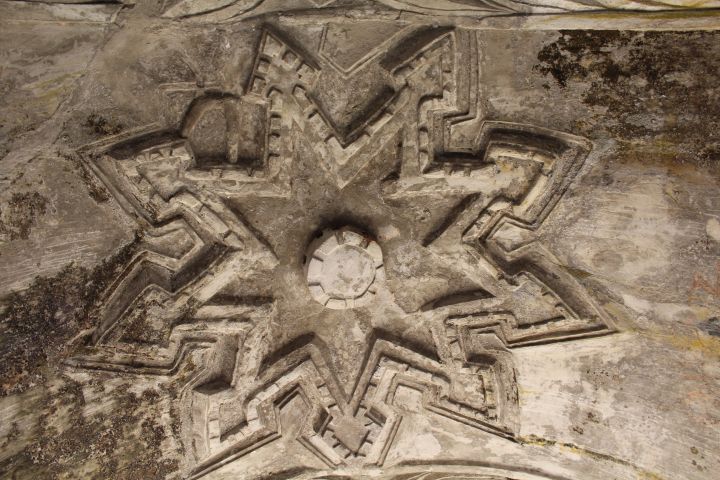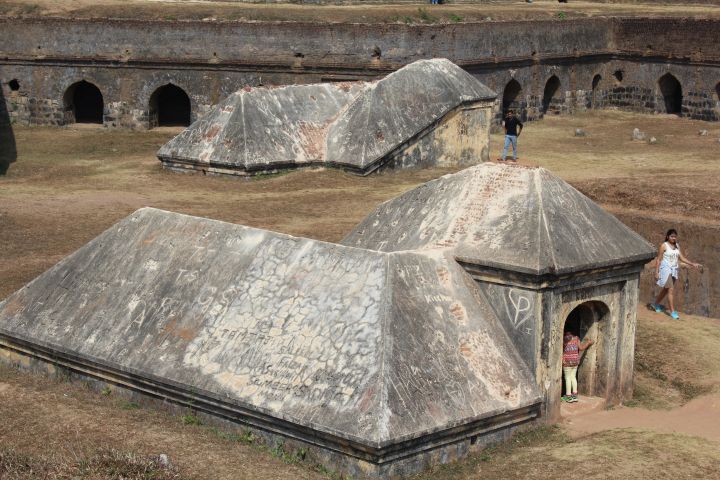Tipu Sultan is as famous for the forts he built as he is for standing up against the British. His father Hyder Ali and then Tipu Sultan himself renovated so many forts and built some more that historians quip that in (former) Mysore State every hillock has a fort!
At a time when the French and British were competing with each other for a larger share of India, Tipu Sultan allied himself with the French. The Marathas and even the Nizam of Hyderabad had aligned with the British. Tipu Sultan wanted to secure the highway from the port city of Mangalore to the natural resource rich Coorg so he took French help to build a fort along the lines of the design developed by the French military engineer Sébastien Le Prestre de Vauban. Sébastien Le Prestre de Vauban pioneered the star-shaped design for forts and was also a military adviser to Louis XIV. The UNESCO lists 12 fortifications of Vauban as UNESCO World Heritage Sites! All of them are in Europe.
Tipu’s association with the French was not new. Both Tipu and his father got their armies trained by the French. In 1794, with the support of French Republican officers, Tipu helped found the Jacobin Club of Mysore. Even Napoleon Bonaparte, the French commander-in-chief who later became emperor, sought an alliance with Tipu in 1798 which didn’t succeed. Sadly, Tipu died in 1799 while fighting the British in the Fourth Anglo-Mysore War.
There are about a dozen forts in India influenced by the European style of fortification but the fort at Manjarabad completed in 1792 is probably the only remaining example of this kind of defence architecture. The star shaped fort was developed when the cannon came to dominate the battlefield. Warfare using cannons required the fort walls to be short, broad and sturdy unlike the tall, thin walls required for traditional warfare using bows and arrows, spears and swords. The star shaped fort was first seen in the mid-15th century in Italy. It is no surprise that Tipu Sultan who was known for embracing new innovations and unconventional methods decided to build a fort along this unique European style. His use of ‘rockets’ during the third and fourth Anglo-Mysore wars surprised the British who later developed it further and used it in the subsequent Napoleonic Wars.
Built atop a hill, the Manjarabad Fort is the shape of an 8-pointed star when seen from above. The arrow-head shaped bastions give it the star-shape. This shape of the bastion enables a panoramic view of the battle-field and also provides no ‘dead-zones’ unlike circular or rectangular bastions. A dead zone is the space between two bastions where the enemy is relatively safe from being attacked by those inside the fort.
We can’t get an aerial view so the shape of the fort has been carved on the entrance arch for us to fully appreciate the architecture. Tipu Sultan used granite stones and lime mortar for the outer walls while he used burnt bricks for the inside walls and structures. The walls of the fort slope outwards and this is another feature of French defence architecture. If the attacking enemy got too close to the fort, cannon balls and stones or balls of fire could manually be thrown down using the sloped walls.

Located just 10 km from Sakleshpur on the Bangalore-Mangalore Highway, Manjarabad Fort is unknown to most tourists. A steep muddy pathway and then a flight of stairs lead to a wide passage, between granite walls, which ends at an ornate-arched main entrance of the fort. A narrow pathway then leads to another gateway which opens out into the area enclosed by the fort-walls. There is a well in the middle of the courtyard which has steps from four sides. There are two subterranean cellars built to stored gunpowder as they remain cool even in summer. Unbelievably, the temperature in these cellars is at least 5 degrees less than the temperature outside! There are also a few rooms along the walls to house goods and soldiers. The locals tell tales of a tunnel leading from the fort to Srirangapatna which was the capital of Tipu Sultan. The fort was taken by the British after Tipu’s defeat and they supposedly closed the tunnel. There is no evidence today of an entrance to the tunnel or the tunnel itself.

The location of the fort is such that Tipu could control the access to both Mangalore and Coorg. Locals say that if the skies are clear, one can even see the Arabian Sea from the bastions of this fort. They also speak excitedly of a few scenes from the famous Kannada movie ‘Mungaru Male’ that were shot here. Sadly, there is no credible information put up by the authority in-charge. There are no records of the fort playing an important role in any battle but it is superb example of defence architecture. India’s only in-tact star shaped fort is at the mercy of the elements and careless tourists who have left evidence of their insensitivity by carving their names on the walls and urinating in the sentry boxes.
Not only is the Manjarabad Fort a shining example of defence architecture but it is a great place to catch views of the Western Ghats. One can climb up to the pointed end of the arrow-head shaped bastions to sit and look out at the surrounding scenery. The place is so poetic that the mist enclosing the fort in the mornings or during the monsoons must have inspired Tipu Sultan himself to name the fort Manjarabad (In Kannada manju means mist).
Monsoons are a good time to visit so that you can experience the thick mist. Winters are a good time if you want to explore the fort. Summers are the best time to catch views of the surrounding mountains and probably even the Arabian Sea.
Plan a day trip from Bangalore
Saturday –
- Bengaluru – Hoysala Temples at Belur and at Halebid – Stay in an estate in Sakleshpur
Sunday –
- Sakleshpur – Manjarabad – Bangalore